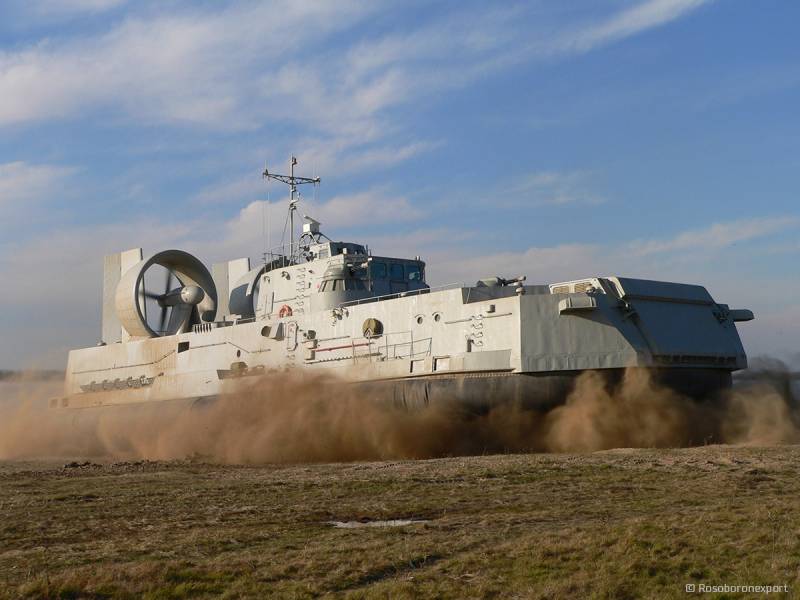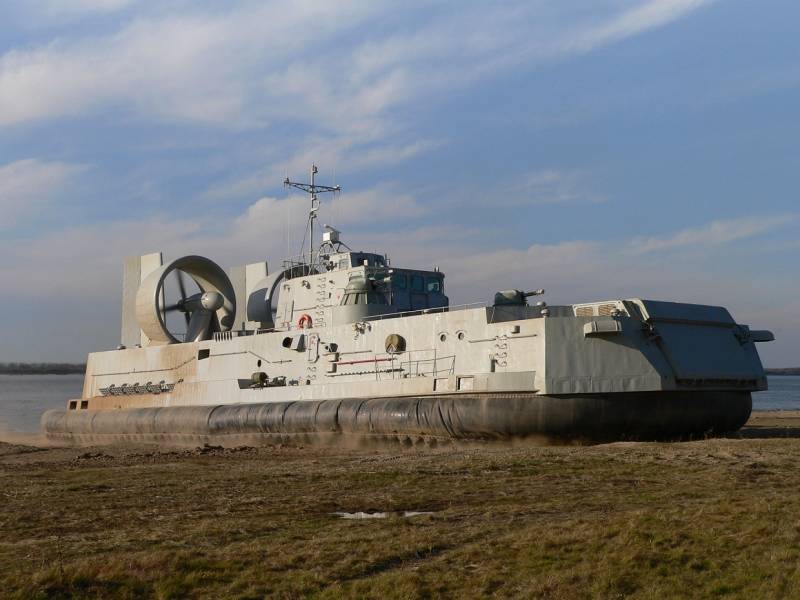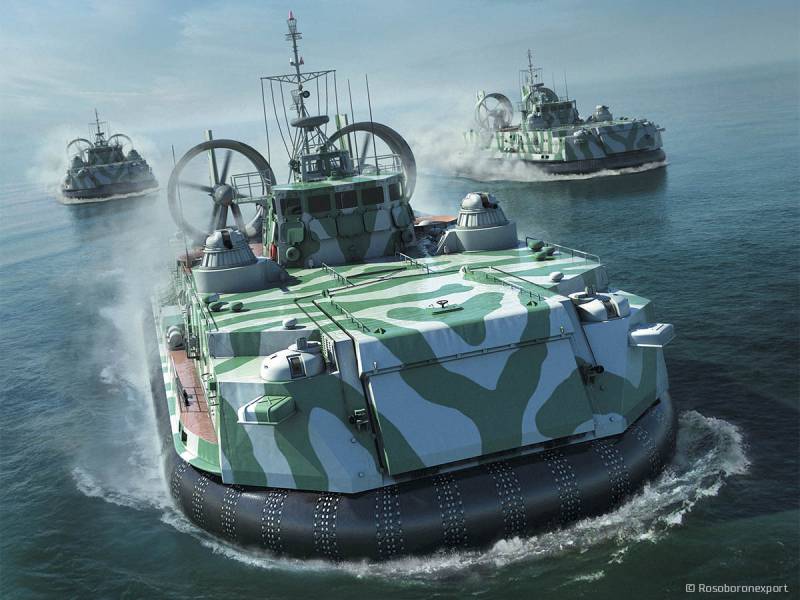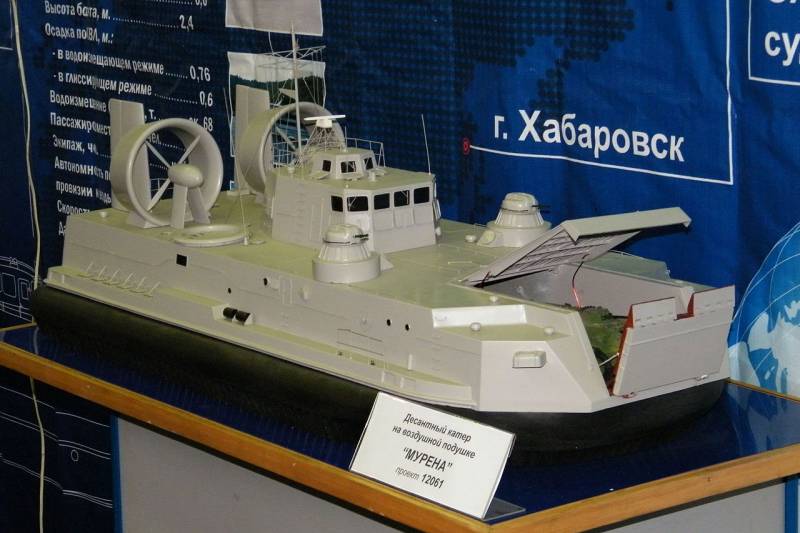
The “Murena” Hovercraft: Reviving a Naval Icon
Since the early 2000s, discussions have been underway regarding the potential mass production of the upgraded Murena-M hovercraft landing craft. Enterprises under the United Shipbuilding Corporation have been diligently developing the project and gearing up for production. Reports indicate that construction of these new boats may commence this year at the Khabarovsk shipyard.
Yearly Outlook
On January 9th, Vesti.Khabarovsk TV aired an interview with Sergey Korolev, Chief Engineer of Khabarovsk Shipbuilding Plant JSC (KhSZ). The central theme of the conversation revolved around the company’s plans for 2023 and the strategies in place for their realization. The discussion placed significant emphasis on personnel management, youth recruitment, and related topics. Moreover, Korolev delved into the ongoing and prospective ship and vessel construction endeavors.
Korolev noted that, at present, KhSZ’s collaboration with the naval fleet is primarily centered on equipment repairs. However, the future may hold the commencement of the construction of new combat units for the Navy. According to Korolev, this would mark a pivotal moment in the factory’s history.
The chief engineer elucidated on KhSZ’s construction plans. The shipyard, in partnership with a design organization, recently finalized an initiative project for the modernization of a landing hovercraft (DKVP) under the codename “Murena.” This year, the plant anticipates receiving an order from the Ministry of Defense for the production of such equipment. Korolev is optimistic that the initial boats of this new series will be laid down before the year’s end.
The Ministry of Defense has yet to comment on KhSZ’s plans. The details of such orders, including their timing, scale, and cost, remain undisclosed. Nonetheless, provided that KhSZ’s leadership accurately gauges the situation, these particulars may emerge in the coming months.

Inception and Evolution
The original DKVP pr. 12061 “Murena” design dates back to the early 1980s, conceived by the Leningrad Central Design Bureau Almaz. By the mid-1980s, technical documentation was prepared and handed over to Khabarovsk shipbuilding plant to commence serial construction. The laying of the first boats ensued.
The lead Murena, bearing tail number D-453, was delivered to the customer in 1985. From 1987 to 1992, KhSZ constructed and commissioned an additional seven boats. These vessels were designated for the landing forces of the Pacific Fleet and were stationed in the port of Khabarovsk. The new DKVPs were engaged in various maneuvers and exercises.
In November 1994, amid broader challenges facing the Russian Navy, a decision was made to reassign all Murena craft from the landing forces to the coast guard of the Federal Security Service. These boats served in this capacity until the mid-2010s, when resource exhaustion led to their retirement. The first seven boats were subsequently disposed of. The final vessel of the series, D-143, found itself mothballed within the KhSZ workshop.
In the early 2000s, KhSZ received an export order for Murena, with three DKVPs acquired by the South Korean Navy. Construction began in 2005 and 2006, with the vessels entering service by the end of the decade. Future South Korean orders remained a possibility.
Reviving Construction
Construction of the DKVP pr. 12061 for the Russian fleet came to a halt in the early 1990s, with the sole export contract completed in the mid-2000s. Nevertheless, periodic proposals emerged to resurrect boat construction for the Russian Navy’s benefit.

In the early 2010s, plans were devised to adapt the Murena for use on the Mistral universal landing ships. A modernized Murena-M DKVP was created for this purpose, with discussions in 2014 suggesting the construction of five such vessels to equip two landing ships. However, in 2015, France declined to transfer completed UDCs to Russia, casting uncertainty on the future of the upgraded Murena.
By 2018, the project regained traction, with the potential for similar boats to be constructed for a new domestic UDC project. A series of eight units by 2027 was contemplated, with the first Murena-M possibly laid down before the decade’s end.
However, these plans also encountered delays and hurdles. As of now, KhSZ and the design organization have concluded the development of the modernized boat and are prepared for production. The next crucial step hinges on the Ministry of Defense, which must determine the need, quantity, and timeframe for these boats before issuing the requisite order.
Technical Advancements
The original pr. 12061 “Murena” featured a conventional hovercraft design, intended for troop transportation, beach landings, and fire support. It could also function as a minelayer. The Murena boasted a box-shaped hull with an internal deck for accommodating troops, flanked by power plant and air cushion injection units. The boat measured 31.3 meters in length and 14.6 meters in width, with a total displacement of 150 tons, including nearly 50 tons of payload.
The power plant comprised two gas turbine engines, each with a capacity of 10,000 horsepower. Power was distributed to two air cushion blowers within the hull and two propellers for propulsion. This air cushion enabled low-altitude movement above the surface and the ability to surmount certain obstacles, with the boat achieving speeds of up to 55 knots and a range of 200 nautical miles.

Internally, a tank deck spanned almost the entire boat length, equipped with a folding bow ramp for loading and disembarking. The Murena accommodated one main tank, two armored personnel carriers or infantry fighting vehicles, two guns with tractors, or up to 140 paratroopers.
For self-defense and fire support, the boat featured two AK-306 artillery mounts, two BP-30 mounts with AGS-17 automatic grenade launchers, and several MANPADS. Once the ramp was lowered, the landing force could engage with personal weapons or the weapons of their combat vehicles.
As per available information, the current Murena-M project retains the core design features and layout, but incorporates modern engines, electronic systems, and weaponry. These enhancements promise a substantial boost in tactical, technical, and operational capabilities, along with compatibility with contemporary Navy control systems.
Awaiting Construction
The Russian Navy’s requirements encompass various landing craft, including vessels with displacements up to 150 tons and carrying capacities of up to 50 tons. In the past, DKVP pr. 12061 “Murena” filled this role, but they have long been retired and dismantled. In recent years, discussions have centered on constructing similar boats employing modern materials and technologies.
While the Murena-M project and production preparations have faced significant delays, both the design organization and the manufacturer are now poised for construction. The next steps hinge on the Ministry of Defense, which must decide whether these boats are necessary, in what quantity, and within what timeframe – only then can the appropriate orders be issued.





